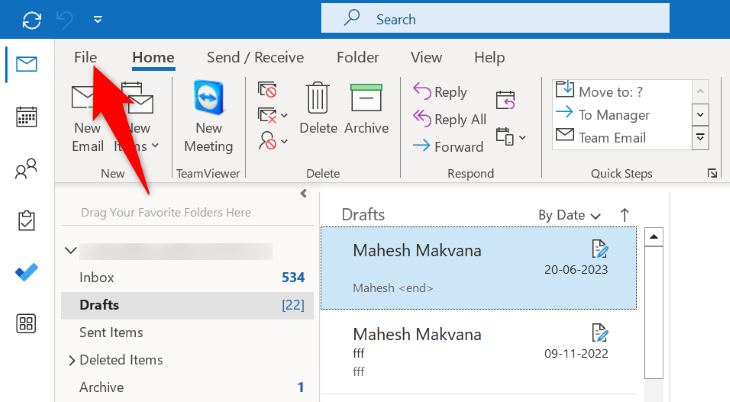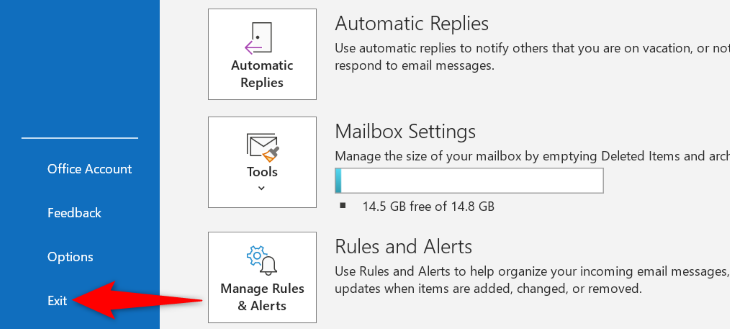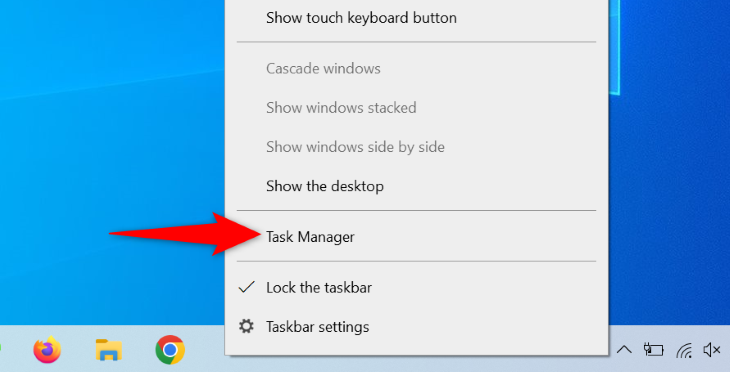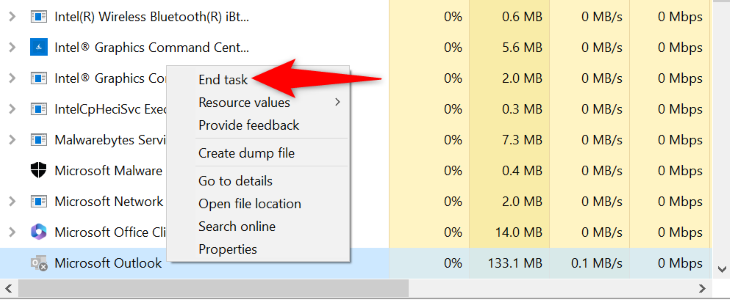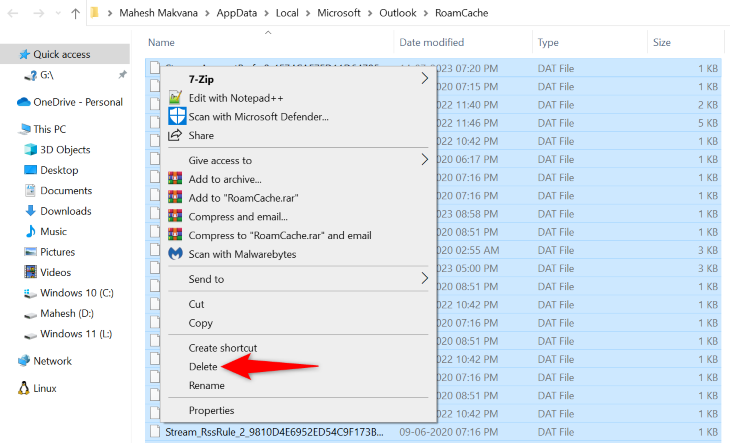Key Takeaways
- To restart Outlook, in the app’s top-left corner, click “File.” In the left sidebar, choose “Exit.” Then, relaunch the app from the “Start” menu or your desktop shortcut.
- To reboot Outlook when it’s frozen, right-click your Windows taskbar, choose “Task Manager,” access the “Processes” tab, right-click “Microsoft Outlook,” and choose “End Task.” Then, re-open the app from the Start menu or your desktop.
By restarting Microsoft Outlook on your Windows PC, you can fix many minor Outlook issues as well as bring your changes in the app into effect. Whether it’s frozen or just a little glitchy, we’ll show you how to easily restart your email client on your Windows 11 or Windows 10 PC.
Quit and Relaunch Outlook on Windows
The standard way of closing apps on Windows is to click the X icon in the app window’s top-right corner. However, that method doesn’t work with Outlook. Clicking X in Outlook’s top-right corner only minimizes the app to the system tray; the app keeps running in the background.
If you want to give your app a proper reboot, you’ll have to use a different option in the app.
To use that option, in your Outlook app’s menu bar, click “File.”
In the left sidebar, at the bottom, choose “Exit.”
Your Outlook app is now fully closed. (In a rare case the app is still open in the system tray, use the section below to force close the app.)
To now relaunch the app, open the “Start” menu, find “Outlook”, and click the app. You can also use your app’s desktop shortcut to launch the app.
Reboot Outlook When the App Is Unresponsive
If your Outlook app is frozen and you can’t click the options in it, the above method won’t work for you. In this case, use your Windows PC’s built-in Task Manager utility to force your app to close. This tool can close any app running on your machine, even the one that’s stuck on any screen.
To use it, first, right-click your taskbar (the bar at the bottom of your screen) and choose “Task Manager.”
In the open utility, access the “Processes” tab. Here, find “Microsoft Outlook,” right-click it, and choose “End Task.”
Task Manager will force close your Outlook app.
To now re-open the app, double-click the app’s shortcut on your desktop. Another way to do this is to open the “Start” menu, find “Outlook”, and select the app.
Clear Outlook Cache Files to Fix App Problems
If a simple Outlook reboot didn’t fix your app issues, clear the app’s cache files to potentially resolve your problems. Outlook builds these cache files to improve your app experience, but sometimes, these files become corrupted and cause the app to malfunction.
Clearing your Outlook cache doesn’t delete your emails, contacts, or other data. Outlook will rebuild these files as you use the app.
To do that, first, fully close the Outlook app on your computer. Then, open the “Run” dialog box by pressing Windows+R, type the following in the box, and press Enter:
%localappdata%\Microsoft\Outlook\RoamCache
In the open folder, select all files by pressing Ctrl+A. Then, right-click a selected file and choose “Delete.”
When your Outlook cache is cleared, launch the app, and your issue should be resolved.
And that’s how you give your favorite email client a restart on your Windows 11 or 10 PC. We hope it achieves the desired results for you.


